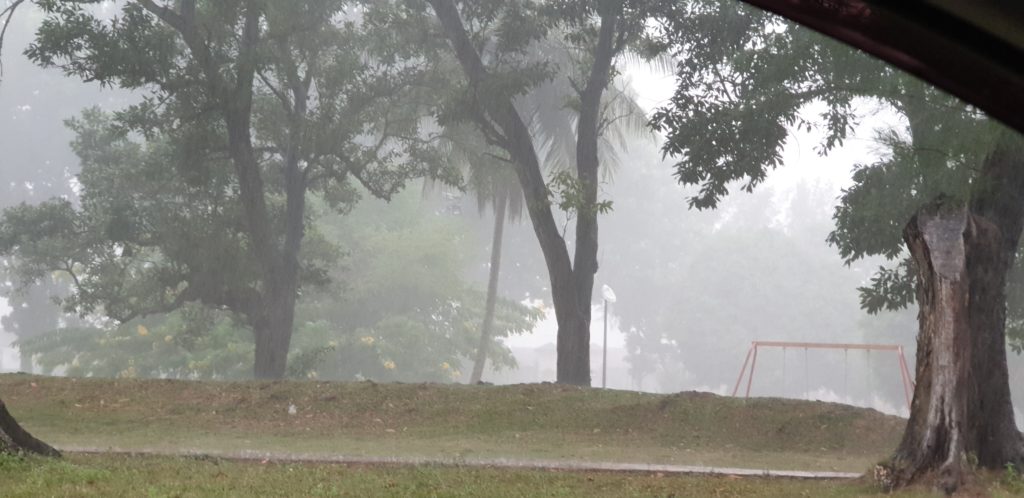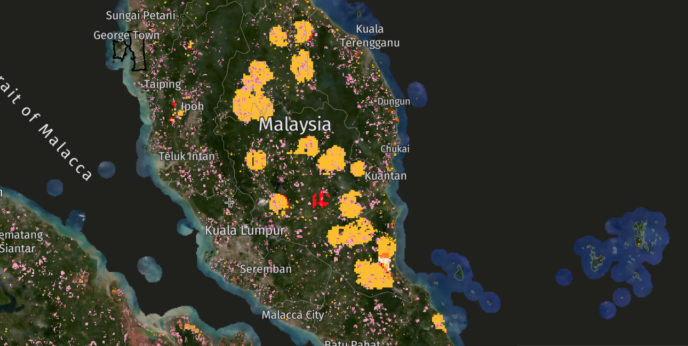
KUALA LUMPUR, May 18 – At some point in the afternoons the past week, temperatures must have hit 40 degrees celcius or at least if felt like it, said Jane (not her real name), a public relations officer, during an afternoon function in the city.
She was not alone. Many Malaysians have taken to complaining about the “crazy hot weather’ or having to deal with the sudden onset of rashes on their skin, sore throat, runny nose, sneezing, coughing and nights that have become unbearably hot to get a good night sleep.
Compromised Health
With the exception of health problems related to the current heatwave, the other complaints have been steadily rising over the years. While polluted air (with several towns reading Air Pollution Index readings of above moderate levels this past few weeks) is an established factor for causing a host of problems including eye-irritation, respiratory issues for the sensitive groups, the number of “sensitive people” seemed to have gone up as well, looking at the higher number of people turning up in hospitals with skin and respiratory complaints.
One does not even have to get the hospitals to get the numbers. A grab provider can inform, upon a casual query, that at least every fifth or fourth person who gets into his car produces a hacking cough, sneezes throughout the journey or is just sick and on the way to a clinic.
Sneezing, whizzing, coughing are not new but when the strongest of them are also feeling them warrants some introspection.
Is the health of the people in Malaysia being compromised through no fault of theirs? Air pollution in the urban areas is certainly becoming less conducive for human health, but what about other contributing factors, such as deforestation. One environmentalist suggested that weather engineering gone wrong can also contribute to unhealthy air, although there has been no evidence to suggest an incident of cloud seeding gone wrong in Malaysia and making the air even more dense with pollutants.
What is happening really?
Air Pollution, Heat and Unusual Rain Patterns
Late April, Malaysia was reported to be in the midst of a very hot spell by the Malaysian Meteorological Department. After the heavy downpours till February and in some places March during the monsoon since late last year, it was turn for hot weather, with many parts of the peninsular and some in Sabah and Sarawak experiencing higher than usual temperatures.
So, people in some areas are now dealing with a combination of a heatwave, air pollution, and less rain and and dry taps as well. Can everything be blamed on El-Nino and nothing on human activities?
Apart from the more known polluters such as emissions from fuel-powered vehicles and industries in the cities there is also ground-level ozone and other suggested polluters including from power stations and towers.
Deforestation has been a steadily rising contributor to not only a warmer climate as it removes a major barrier to pollution, but it is said to also unearth zoonotic diseases in the process of a disturbed ecology, removal of trees and plants, introducing humans to unknown viruses and bacteria.
These do come under the results of man-made activities.
People will begin to feel more of the effects of air pollution when the protective layers offered by trees are being stripped just as their natural ability to keep temperatures down are also being taken away, one naturalist agreed.
Desertification is a slow process but not too far from lands that are continously stripped of their natural forests and neglected, said another.
Malaysia is lucky as it still has steady rainfall and in the forests, the rains are still heavy. There are also many policies that protect the environment and various bodies have been set to ensure that its natural forests are protected.
However, enforcement remains poor while on the other hand, the openess to billion dollar investments remains very high, to the point where business decisions can compromise the country’s natural resources like its forest, its flora and fauna and already endangered animals.
Logging, cutting trees for mass agriculture produce, and other commercial activities have been taking their toll on the health of people living around the affected areas.
For instance, the hotter than usual scenario this year? It used to rain generously in tropical rainforest Malaysia every other day, and yet did not produce as many flash floods, and in many places as they do now. The rains moderated the weather, kept the air cooler, cleared the dirt, produced blue skies even in cities like Kuala Lumpur and allowed for easier breathing. The trees did the job of absorbing the excess water and capturing the carbon and producing clean air to breathe.
Not so much these days.
The rains do not come freely every other day now – whether natural or engineered. They come in heavy downpours, in unusual storm patterns and often drizzle like as though some cloud seeding venture gone wrong, leaving behind hot and stale air and the unfinished job of poorly washed trees and leaves that remain dusty-looking.
Tropical rainforest Malaysia did not have two seasons – hot summers and cold periods, and that is a fact. It was sunny all year long with rain all year long but more so during the monsoon period but there were no extremes. Climate change?
Before climate change is conveniently cited, here are some factors to consider.
While fires in Indonesia, usually due to forest clearing for commercial crops, have been guilty of causing haze in the region in the recent years, and Thailand more recently for some haze in the northern states, there have been fires reported closer to home as well. Like in Gua Musang, Kelantan, Baling in Kedah, Sepang in Selangor, just to name a few? All these places have also been regularly reported for deforestation activities with high carbon emissions rates, with some of them happening in primary forest areas. Some of these areas have also reported Air Pollution Index figures of above moderate levels.

According to Global Forest Watch, there were 74243 total deforestation alerts reported in Kelantan including in Gua Musang for the week covering May 3rd to May 10 this year. The alerts covered a total of 910.3 hectares including 446 hectares in primary forest and 0.11 hectares in intact forest. How the inroads were made into intact forest is another question to ask.
In Baling, Kedah, deforestation alerts covered more than 25 hectares of land including a bit of intact forest and primary forest land.
There were also reports of deforestation in Pahang, Selangor, Perak and Penang during the period.
The carbon emissions rates of the deforestation in the areas remain much higher than the rate of their removal. While there have been tree cover gain in these states, they remain smaller in scale compared to the tree cover loss.
Coughing and heat rashes are not new, and neither are rainy weather and hot weathers, but the extremes the people are facing now, be it floods in areas that have never experienced floods before or unusually hot weather in a place where “it did not use to be this hot”, are new.
Apart from emissions from vehicles and industries, deforestation and reduced rainfalls have been regularly reported in some of the areas where temperatures have soared, and those who come under the category of sensitive groups, have been suffering the consequences. For many, breathing compromised air leave long term damages to their health.
Some of tree clearings have also taken place in primary forest areas while on a smaller scale, fires have been also reported. Who are monitoring these areas, who are ensuring that the real wealth of a country like Malaysia – that boasts an open relationship between the rains and forests and hence its rich rainforest – is being guarded?
While various efforts have been undertaken to tackle carbon emissions including the adoption of renewable sources of energy, planting of trees and conservation efforts, more can still be done especially in sticking to environmental policies in the approval of projects and investments. This will clear the air and reverse the changing local climate trends – and this has been the conviction of many environmentalists who have continued to list out the damages of indiscriminate felling of trees and the clearing of forests.
A hotter weather and less rain has been pointed out as some of the consequences by various environmentalists over the decades.
–WE